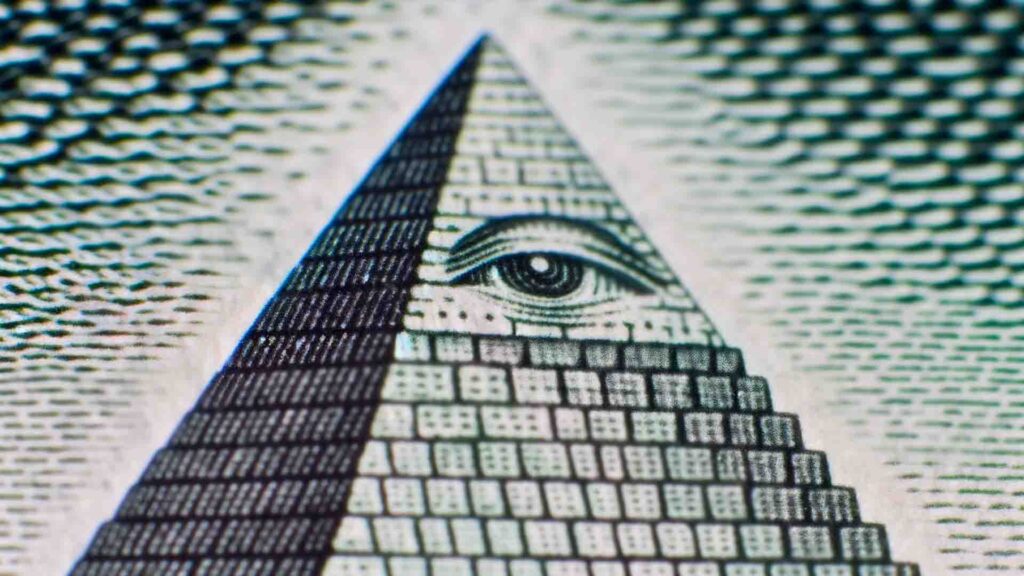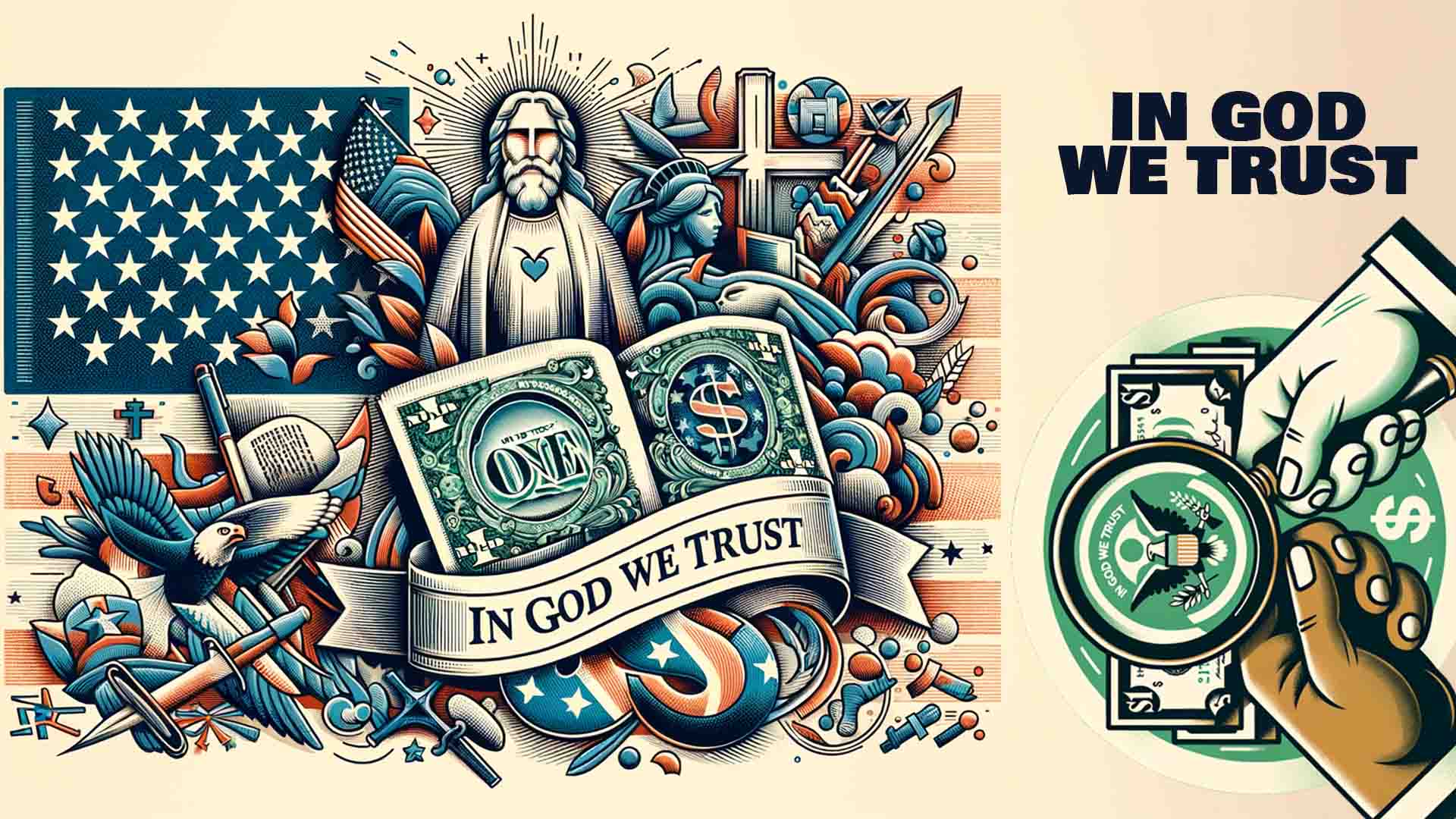The phrase “In God We Trust,” engraved on American dollar bills, holds a position of profound significance, embodying the United States’ official motto. Yet, how did this declaration of faith become so integrally linked with the nation’s currency?
Originally penned as “In God We Trust,” its literal translation suggests a collective belief in God. However, a more nuanced interpretation could be rendered as “God is with us” or “We rely on God,” encapsulating a sentiment of divine trust and reliance.
In a nation that champions secularism, the pivotal role of religion remains undeniable. The widespread acceptance and use of “In God We Trust” across various public domains underscore a collective acknowledgment of faith’s enduring influence in American life, bridging the secular with the spiritual in a nation’s ongoing narrative.
This exploration of “In God We Trust” on American dollars offers insight into a phrase that is more than mere currency adornment—it is a historical testament and a continuous affirmation of a nation’s reliance on and trust in a higher power, shaping America’s identity in its currency and beyond.
🙏However, the motto's influence extends far beyond dollar bills and coins, reflecting on numerous aspects of American life and public spaces, symbolizing unity, resilience, and a collective trust in a higher power. ✝️In Public Buildings and Schools After its adoption on currency, "In God We Trust" progressively found its way into other public realms, including government buildings and educational institutions. The legislation in several states mandates or encourages the display of the motto in public schools, underscoring its perceived role in instilling values and patriotism among young Americans. This movement reflects a broader desire to maintain a spiritual foundation in public life, amidst increasing secularization. ✝️On Police and Fire Department Vehicles In recent years, the motto has also made appearances on police cars and fire department vehicles in various states. Supporters argue that including "In God We Trust" on these vehicles serves as a reminder of the country's roots and values. It is seen as a symbol of hope and protection, invoking a sense of divine oversight over those who serve and protect the community.
Historical Background
During the American War of Independence, the phrase surfaced in the culture through a hymn composed by William Billings, which included the lines:
“We are not afraid, we trust in God, God of New England reigns forever.”
The sentiment encapsulated in this phrase gained immense popularity throughout the Civil War, as a surge in religious fervor swept the nation. Amidst the tumult, US Treasury Secretary Salmon P. Chase received numerous letters from the public, urging that God’s name be inscribed on the country’s currency. It was in 1863, during Abraham Lincoln’s administration, that “In God We Trust” first appeared on the two-cent coin.
The period between 1865-1873 saw legislation and coin mints adapting to include the motto on other denominations of coins. However, it wasn’t consistently used until 1908 when Congress mandated that all coins bear the inscription. By 1938, the motto was featured on all coins in circulation.
The escalating tensions of the Cold War and the atheistic stance of the Soviet Union also played a role in promoting this phrase in the US. In a move to counter the atheistic policies of the Soviets, US authorities made “In God We Trust” the official national motto in 1956, and it was also mandated to be printed on paper currency.
By the 1960s, all currency notes were produced with “In God We Trust” a practice which continues to this day.
Legal Challenges and Public Sentiment
The motto faced legal scrutiny with the case “Stefan Ray Aronow vs. United States of America” in 1970. Aronow argued that the inscription contradicted the secular nature of the state. Nonetheless, the US court ruled that the motto bore no religious propaganda and was instead included on banknotes for secular purposes. This type of legal challenge has surfaced frequently throughout US history.
In more contemporary instances, such as following the September 11 attacks, the phrase saw a resurgence, echoing the sentiment that “God is with us” especially in places like Mississippi, where it was legislated in 2001 that the slogan must appear in every school. The phrase began to proliferate not only in educational institutions but also in other public establishments.
In 2006, the Senate reaffirmed the phrase as not just national but the official motto, supported by the majority of the members. And by 2014, the state of Mississippi had added the phrase to its state seal. Today, various municipal and state governments are pushing to display this motto in public spaces, including on police and fire department vehicles.
Public Perception and Religious Significance
The use of “In God We Trust” has not been universally praised, as evidenced by Theodore Roosevelt considering the practice blasphemous. However, surveys indicate that most Americans are comfortable with the phrase appearing on currency and state property.
Though the United States is a secular nation, religion indeed plays a significant role in the society. Therefore, employing this affirmation across various aspects of public life does not seem incongruous to the values and identity upheld by many Americans. The widespread use of “In God We Trust” on currency and other state symbols illustrates the profound connection between faith and national pride ingrained within the American psyche.
Biblical References and Spiritual Symbolism in American Currency
The Eye of Providence and the Pyramid

One of the most intriguing symbols found on American currency that echoes biblical themes is the Eye of Providence atop an unfinished pyramid on the one-dollar bill. This symbol, often associated with divine oversight, has roots in Christian iconography, representing the all-seeing eye of God watching over humanity. The unfinished pyramid symbolizes strength and durability but also suggests an ongoing journey, mirroring the biblical themes of perseverance and the unfolding of divine plans over time.
Just as the Israelites journeyed through the wilderness with faith in God's plan for them, the unfinished pyramid under the watchful eye reminds us of the constancy of divine presence through the trials and unfinished business of our lives. It symbolizes the belief in a guiding hand through the wilderness of the unknown, echoing the biblical assurance of God's plans to "prosper you and not to harm you, plans to give you hope and a future" (Jeremiah 29:11).
The Great Seal’s Mottoes
Furthermore, the Great Seal of the United States, which adorns the one-dollar bill, contains two Latin phrases, “Annuit Coeptis” and “Novus Ordo Seclorum.” The former translates to “He [God] has favored our undertakings,” and the latter means “New Order of the Ages.” Both phrases, while not directly taken from the Bible, resonate with the biblical perspective of divine favor and the concept of a new era of righteousness and peace under divine guidance.
Liberty: A Biblical Concept
The word “Liberty,” inscribed on various denominations of American coins, echoes the biblical principle of freedom. This concept is deeply rooted in the scriptures, where liberation from bondage, whether physical, spiritual, or emotional, is a recurrent theme. The Liberty Bell itself, another iconic symbol of American freedom, is famously inscribed with a quotation from Leviticus 25:10, proclaiming liberty throughout the land—a direct reference to the Year of Jubilee, a time of freedom and redemption for the people.
The Moral Foundations of Currency Design
Design elements in American currency, from the portraits of founding fathers and leaders known for their moral integrity to the depictions of iconic monuments like the Lincoln Memorial, are imbued with an underlying ethos of virtue, leadership, and sacrificial service. These qualities, though not exclusively biblical, align with biblical themes of leadership, wisdom, and service to the community.
Public Perception and Reflections in the Modern World
The inclusion of spiritual and biblical references in the fabric of American currency reflects a broader recognition of the role of faith and moral principles in the public and civic life of the nation. It symbolizes a collective acknowledgment of a higher power and a set of shared values that have guided the United States since its inception.

